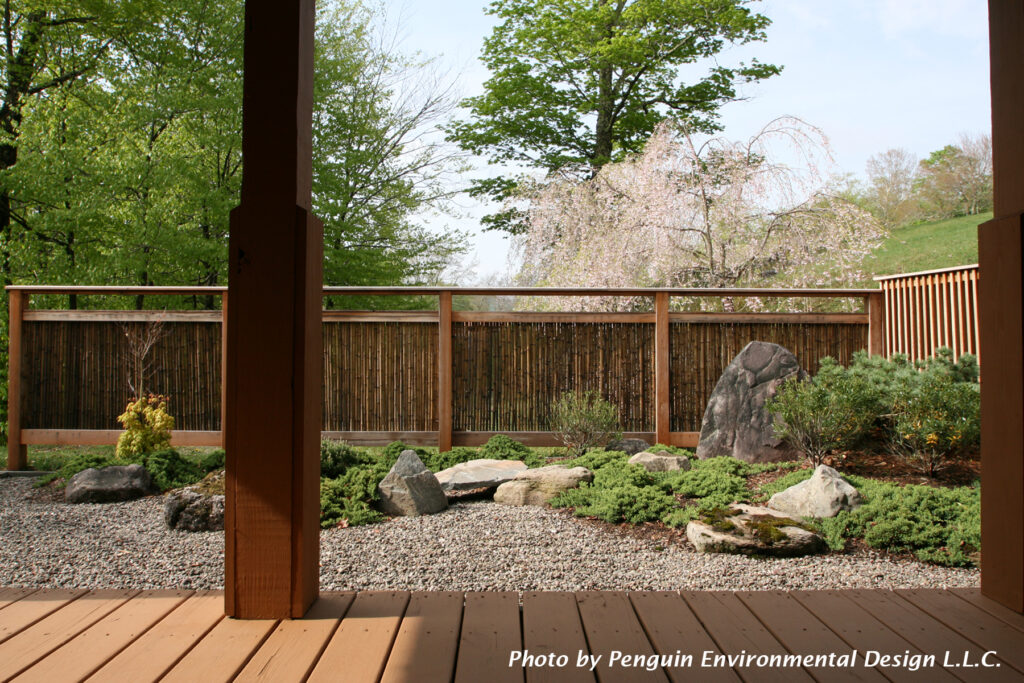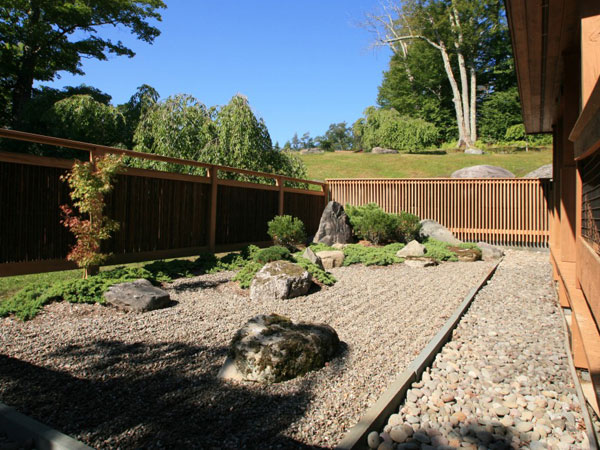Borrowed scenery, shakkei, is one of the techniques of garden design. It integrates the scenery beyond the backside of the gardens with the actual gardens. In most cases, borrowed scenery can be easily done when the garden site is near mountains.
As a Japanese garden designer, I categorize two types of Japanese gardens using borrowed scenery techniques. One is the garden without a clear boundary between inside and outside. Another is the one with a clear boundary.

Tenryu-ji temple is a good example of the first type. Muso Soseki, a Rinzai Zen Buddhist monk, designed the gardens when Takauji Ashikaga founded Tenryu-ji as a Zen temple in the 14 Century. Sogenchi-pond (曹源池) garden behind the main building is a beautiful Chisen-kaiyu-style garden in front of Arashi-yama mountain. Since there is no clear border at the property, we cannot recognize where the garden ends. On the contrary, it looks like the garden is expanding to the top of the mountain. Therefore, we see the magnificent green background behind the pond.
I would introduce the garden of Ryoan-ji temple as another type of borrowed scenery. The garden of Ryosan-ji temple is a Kare-sansui-style rock garden. Rocks and gravels are the only materials in the garden. Thick mud walls form the configuration of the garden. There is no mountain beyond the walls. However, we can see a cherry tree over the top of the walls. I think that the juxtaposition of this tree and inorganic garden materials is excellent. The walls become an important element of the garden, too.

Juxtaposition with Borrowed Scenery
The photo above is the Japanese dry garden at Friendship House in Frost Valley YMCA. We made a bamboo fence as the clear border of the garden. We intended for an existing cherry tree to become a part of the borrowed scenery like the garden of Ryoan-ji temple.
Borrowed scenery is an interesting garden technique. The only problem is that we cannot control the scenery beyond gardens. I will discuss that issue sometime later.


